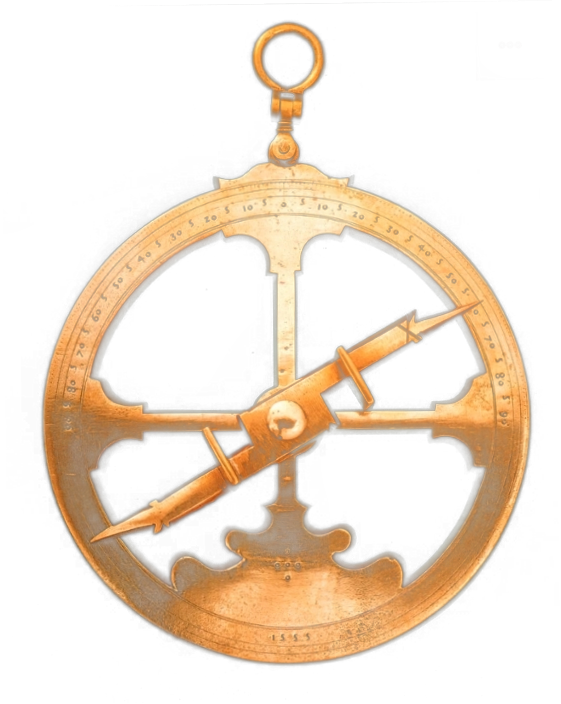Planetary Notes
© Alan Clitherow. All rights reserved
Society for Popular Astronomy
Looking Forward to the Planets in December 2025/ January 2026
Mercury passes behind the Sun (superior conjunction) on 21 January and becomes an evening object, but is not readily observable as such until February.
Venus is also a morning object in December, moving towards its own superior conjunction on 06 January. It rises in the south-east around 07.00UT on 01 December but is rapidly lost to the sunrise making it difficult and, perhaps, dangerous to observe without great care. The situation is made worse after 19 December when Venus slips below the ecliptic as seen from Earth. By late January Venus has returned to the evening sky but is still too close to the Sun for easy or safe observation.
Mars, like Venus, is a disappointment. From the UK it sets only 25 minutes after the Sun in early December so proper observation is impractical and we must wait for its return into the morning sky later in the New Year. Solar conjunction is on 09 January and even late in that month, Mars will rise only minutes before the morning Sun.
Which brings us to glorious Jupiter, which does anything but disappoint as it approaches, then passes, opposition on 10 January. This giant planet is visible through most of the hours of darkness over the period and, from UK latitudes, sits beautifully high, around 60 degrees up, when transiting due south. That happens around 03.05UT in early December, close to midnight UT around 10 January and 22.35UT at the end of that month. Its high altitude means we see it through less of our own turbulent atmosphere, increasing the chances of steady seeing, with high levels of detail on view.
At opposition Jupiter shines at magnitude -2.8 and is very obvious in the constellation of Gemini. Its disk will then stretch to 46.6 arcseconds (46.6”) in apparent size across its equator and it won’t be smaller than 44.2” at any time in this period. By late January it will be a perfect object to observe in the comfortable mid-evening hours.
Saturn is an early evening object, best seen at the beginning of December. It can be found at its best when its due-south (transit), which happens at 19.00UT early in that month and it will be over 30 degrees high at transit for most of the UK. By early in the New Year it will transit in evening twilight around 17.00UT but can still be followed for some hours as it sinks slowly to the south-west. Late in January, transit is around 15.15UT, in daylight, so Saturn will be well past its best as darkness falls but still observable. The rings will be very nearly edge on to Earth in this period, opening slowly from half to just one degree. with the south of the planet very slightly more visible to us. Look for the hard shadow cast by the rings on the cloud tops of Saturn.
The moon Titan can be seen crossing Saturn at these shallow tilt angles. In December, both on the 8th, from 17.40UT and the 24th, from 17.10UT UK observers can see Titan starting its stately crossing. In each case the moon-transit starts with Saturn a little before due-south, so it is beautifully placed for observation in early evening darkness. Sadly the shadow cast by Titan passes north of Saturn, so is not visible. If you miss those, a similar transit can be followed from 17.00 to 22.00UT on 09 January.
Uranus is just past opposition at the start of December, so is well placed if you wish to seek out this visually small but interesting planet. It can be found very high, more than 55 degrees up, when it transits and it sits 4.5 degrees almost directly below the famous Pleiades cluster at that time. Transit times are around 23.00UT in early December, 20.55UT in the New Year and at 18.57UT at the end of January. Scan down slowly from the Pleiades looking for a fuzzy blue-green ‘star’ and add power to see its 3.8” disk. At magnitude +5.6 it is on the edge of naked eye visibility but is easy to find in binoculars.
Neptune is close to Saturn in this period so is best seen at the start of December. Initially it sits 4 degrees left and a little above Saturn but, at magnitude +7.7, you will definitely need binoculars or a small telescope to find it. Like Uranus, it will also appear as a defocused blue-green star but at only two-thirds the apparent size. By the New Year the gap between Saturn and Neptune has closed to a little over 3 degrees. Late in January Neptune sits less than 2 degrees directly above Saturn as the pair slip towards the south-west in evening twilight, but still at 25 degrees or more of elevation.
The highlight of this period is certainly the opposition of Jupiter on 10 January, but there are other planets on view that should not be neglected.
At the start of December, Mercury is approaching its Greatest Western Elongation (GWE) from the Sun which happens on the 7th. This makes Mercury a prominent morning object, a little before sunrise. Look for it from the start of the month and for a week or so after GWE. From mid-UK latitudes it will be low in the south-east from 6.30 UT, shining at magnitude -0.4 and climbing steadily into a brightening sky. By 07 December you should be able to follow it easily by eye for an hour, and much longer by telescope; at sunrise it will be nearly 15 degrees up on that date. After this Mercury sinks steadily back towards the Sun but even by mid-month, it will still be 10 degrees high by sunrise.


